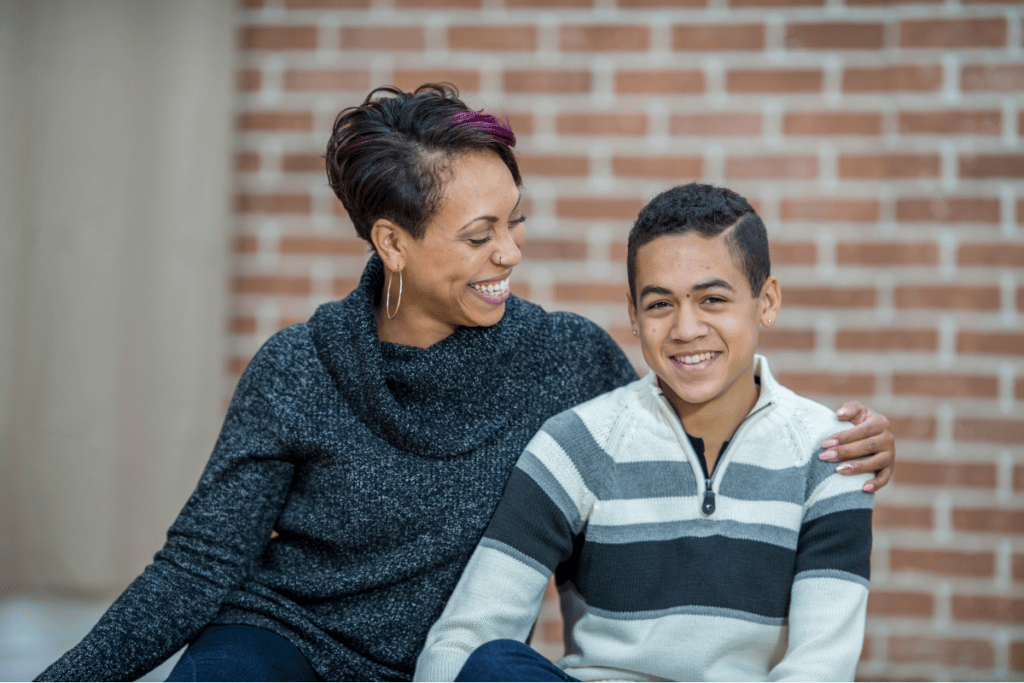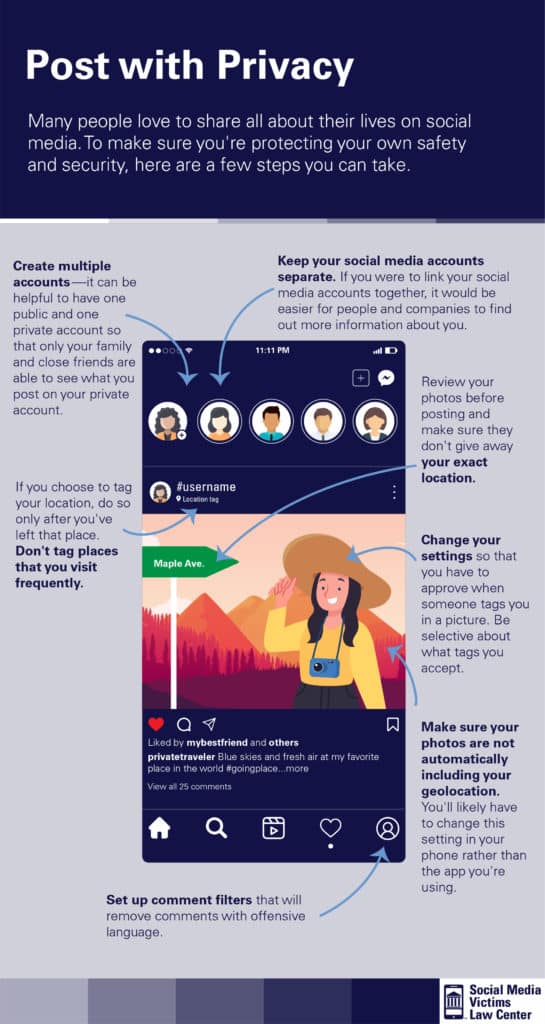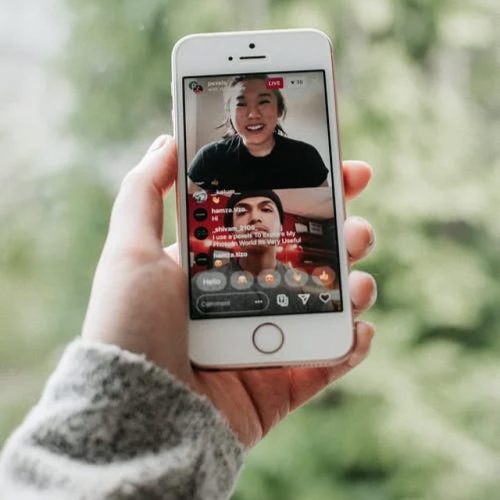A Parent’s Guide to Instagram
Initially released as an iPhone photo-sharing app in 2010, Instagram has become one of the most popular social media platforms among teens, following closely behind TikTok and Snapchat. Approximately 72% of teens use Instagram, and since its purchase by Facebook in 2012, it has become a robust social media platform that also offers video sharing, live streaming, and direct messaging.
 Written and edited by our team of expert legal content writers and reviewed and approved by Attorney Matthew Bergman
Written and edited by our team of expert legal content writers and reviewed and approved by Attorney Matthew Bergman
- Content last updated on:
- September 27, 2024
Written and edited by our team of expert legal content writers and reviewed and approved by

- Content last updated on:
- September 27, 2024
How Instagram Works
Before you can use Instagram, you need to sign up for an account and set up your profile with a picture and a 150-character bio. Instagram works on virtually any device, including desktop computers.
Instagram posts are photos or videos with optional text captions. In addition to regular picture or video posts, you can post:
- Stories – pictures or videos that disappear in 24 hours
- Reels – Short videos of 60 seconds less
- Live streams – Videos that are streamed to your audience live as you record
Common Instagram Lingo
Understanding the common terminology will make your own Instagram experience more enjoyable and help you talk to your teen and monitor their activity.

Followers
Followers are people who subscribe to your account and can see your posts.
Finstas and Rinstas
“Finsta” and “Rinsta” are short for fake Instagram and real Instagram, respectively. Instagram allows users to establish up to five accounts. Many users have one primary account and one exclusive account for closer friends. The exclusive account is typically the one users call their Finsta, whereas the primary account is their Rinsta.
Hashtags
Hashtags are words or phrases with no spaces preceded by #, such as #safersocialmedia, used to index content. When hashtags are added to posts on Instagram, those posts come up in search results when other users type them into the search box.
Recommendations
Recommendations are posts Instagram displays from accounts you do not follow based on posts you like and accounts you follow.
The Dangers of Instagram
Instagram has a strong lure for teens because it offers a forum to connect with friends and online communities. While these activities in and of themselves are not necessarily harmful, Instagram uses algorithms that lack safeguards and are harmful to some youth.
The Addictive Algorithm
The more time users spend on Instagram, the bigger the profit for Meta (formerly Facebook), Instagram’s owner. Whistleblower Peter Mezyk, an app developer formerly employed by Meta, revealed that Meta intentionally employs a marketing approach that promotes addiction to the social media platform.
Studies show that the brain responds to Instagram use with increases in dopamine levels similar to those associated with opiate addiction.
Body Image
Self-comparison is a natural human tendency, especially for girls. In real life, girls have a variety of body types with which to compare themselves, but on Instagram, they are inundated with unrealistic bodies, many of which are the result of filters and photo manipulation.
Although these images are not authentic, they are presented as real, and teenage girls cannot discern the difference. As a result, they constantly compare themselves to ideals that don’t exist and their own body image is distorted. Research shows that girls exposed to images of women with more diverse body types feel better about themselves and their bodies.
Facebook’s own research revealed that 32% of teen girls said Instagram worsened their existing negative body image. A negative body image contributes to low self-esteem and depression. Many Instagram accounts glorify eating disorders, creating a perfect storm for vulnerable girls.
Depression
From 2011 to 2018, the rate of depression among teens increased by 60%, and the number of girls ages 10 to 14 that were admitted to emergency rooms for self-harm tripled from 2009 to 2015. A 2019 study published in JAMA Pediatrics noted that every increased hour spent on social media increased depressive symptoms in adolescents.
Cyberbullying
Cyberbullying is a form of bullying that happens online, where bullies use electronic communication to intimidate, humiliate, or otherwise harm the reputation of others. Global youth charity organization Ditch the Label showed that 42% of cyberbullying took place on Instagram in 2017.
While not physically threatening, cyberbullying can cause more damage than schoolyard bullying. The Cyberbullying Research Center revealed that teens who experience cyberbullying are twice as likely as other teens to have attempted suicide.
The most common forms of cyberbullying on Instagram include:
- Embarrassing photos or videos
- Mean comments
- Adding a derogatory hashtag to posts
- Creating a fake account in someone else’s name and creating malicious or embarrassing posts
- Posting screenshots of private communications
Sexual Predators
According to the National Center on Sexual Exploitation, Instagram is a leading platform where sexual predators find, groom, and recruit victims. The Human Trafficking Institute found that 14% of child sex trafficking victims who were recruited on social media in 2020 were recruited on Instagram. The platform was second only to Facebook, which accounted for 65% of victims.
Further research by the nonprofit group Thorn discovered that 22% of youth using Instagram experienced a sexually explicit interaction through the platform.

How to Protect Your Teen
As a parent, you may wish to protect your child from any exposure to social media, but this approach is not realistic. However, there are plenty of measures to help your child use Instagram safely.
Comply with Instagram’s Age Restrictions
Instagram prohibits children under the age of 13 from registering an account in compliance with the Children’s Online Privacy Protection Act. However, a 2021 report from Thorn researchers revealed that 40% of children ages nine to 12 already use Instagram.
The only way to do this would be through an account established by someone over 13 or by providing false information while establishing the account. Instagram asks for the date of birth but does not require age verification.
While parents understandably do not wish to deprive their children of activities their peers enjoy, inaccurate age information can prevent teens from benefiting from the built-in protections the platform offers to minors:
- New minor accounts are set as private by default.
- Adults engaging in what Instagram deems suspicious behavior are restricted from contacting or following minors.
- Instagram now targets advertising to minors based on age, gender, and location, not based on interests and habits.
Establish Strong Privacy Settings and Practices
Privacy settings influence who can see your child’s posts, follow your child, and contact your child. Help your child set up their first Instagram account to ensure that the privacy settings are appropriate and your child understands how to protect their privacy.
- Keep the profile private.
- Disable location tagging
- Remove or block followers who post content that makes you or your child uncomfortable.
- Use comment filters to automatically block offensive comments.
- Turn off commenting on individual posts.
While you cannot stop your child from changing the privacy settings, you can help prevent this by maintaining a positive, open dialogue with your child about social media usage.
Follow Your Teen
If you do not already have your own Instagram account, set one up when your teenager does, so you can follow them and monitor their posting activity. You can also follow their friends and followers for a complete view of the material they see and the types of interests they are developing.
Instagram offers parents a means to supervise some of their teen’s activity through the Family Center:
- Monitor and limit how much time your teen spends on Instagram.
- View who follows your teen and who your teen follows.
- Receive a notification when your teen wants you to know she reported someone for bullying or harassment.
To set up supervision, your teen will have to invite your account to supervise. Your teen has the ability to remove this at any time, and it is automatically removed when they turn 18.
What You Will Not Be Able to See
Your child can engage in activities you cannot see as a follower or supervising parent, including:
- Separate accounts. You can see and supervise only accounts your child wants you to know about.
- Direct messages. Followers and parent supervisors can’t see direct messages.
If you have your child’s password, you can log in, click the profile picture, then “switch accounts” to see a list of other accounts, if any. This is also the only way to view direct messages. However, your child can change the password at any time.
Be Mindful of Hashtags
When your child adds a hashtag to a post, the post appears in search results for anyone who searches Instagram if the account is public. For private accounts, the posts with hashtags are visible only to followers.
Your teen can also find posts about subjects of interest by using the search bar or clicking hashtags. This is a convenient way to meet friends with common interests.

Teens and even parents of young children can unknowingly post hashtags that attract unsavory individuals to their children. The Children’s Rescue Coalition has compiled a long list of innocent hashtags pertaining to young children that sexual predators target. They include such phrases as:
- #childbath
- #splishsplash
- #bathtimebaby
- #kidbikinis
- #pottytrain
- #naptime
For teens, hashtags like #kissing and #swimwear can attract predators.
Hashtags are also used in overtly nefarious ways.
A study by Tech Transparency Project found that teens can find illegal drugs and opioids on Instagram with two clicks. It takes five clicks to log out of the app. Users can type in a hashtag such as #mdma (the drug ecstasy). Instagram has blocked that particular hashtag, but it auto-suggests similar hashtags that generate the same results.
Secret hashtags related to eating disorders and self-harm are common on Instagram. Many accounts encourage and glorify these types of activities.
Examples include:
- #ana (anorexia)
- #mia (bulimia)
- #selfharmm (self-harm)
Instagram has banned these specific hashtags, but it’s easy for users to create new hashtags that quickly go viral.
If you are following your child’s posts, you can click their hashtags to determine whether they are commonly used negatively.

Report Suspicious Activity
If you see suspicious activity on your child’s account, report it and block the users. Simply click the three vertical dots beneath the post. Reporting messages work similarly. It is also a good idea to have your child block those users.
Limit Your Child’s Time on Instagram
Instagram’s addictive algorithm makes it risky for parents to allow teens unrestricted access. Every child is different. Some children may benefit from a one-hour limit, and others may need a 30- or 15-minute limit.
Teens may resist time limits, but if you are firm about the boundaries, they will adapt, especially if you maintain positive communication and offer alternative activities such as sports, outings, game nights, and hobbies.
If at any time you see Instagram becoming a source of anxiety for your child instead of fun, it may be time to encourage them to scale back.
Does Instagram offer parental controls?
Instagram does not allow parents to filter the content their child sees. The most you can do is help the child set up a safe account and monitor them closely. However, you may be able to install parental controls through your internet service or your child’s device.
Tech-savvy teens can often override these controls. In some cases, the only available parental control is to physically restrict the teen’s access to the device, but even when doing that, your teen can access their account from any internet-connected phone, tablet, or computer.
The Most Important Protection
The most important protection for your child is you. Try to maintain a supportive and helpful stance rather than a punitive one. Establish yourself as a safe place for your child to turn to when uncomfortable interactions occur. Take measures to prevent social media from displacing real-life relationships.
No one knows your child better than you. If you know your child has body-image insecurities, Instagram may not be the right social media platform. Rather than just saying no, offer an alternative and help your child understand the reasons.
How Teens Can Use Instagram Safely
Although Instagram comes with inherent risks, it has potential for good. Used responsibly, Instagram can increase creative expression for artistic teens, keep teens connected with old friends, introduce them to kids from other cultures, and develop critical thinking skills.
The highest risks occur with unlimited use and mindless scrolling, but using Instagram with a mindful purpose and following positive accounts can help girls look at themselves and their world in a more positive way.
Instagram is also a great place to promote acts of kindness and build awareness around important causes. Many teens have enjoyed great success using Instagram and other social media for good deeds, such as raising money for local charities.

What to Do If Instagram Has Harmed Your Teen
The owners of Instagram make more money when users spend more time on the app. They know how harmful their products can be, but they have chosen to prioritize profits over the well-being of our youth. Although the platform is heavily marketed to children, you cannot count on Instagram to keep them safe.
If your child has been harmed, we can help you hold this negligent company accountable.

